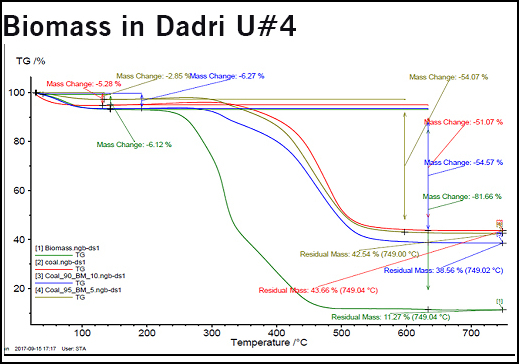
INTRODUCTION
The practice of residual crop burning by the farmers in the winter season causes severe smog in Delhi-NCR region. The reason that the farmers burn crops is that the crop residue is of no value to them and burning this residue appears as quick and cost-effective option to get rid of the waste. In the recent years, this problem has only multiplied and the air quality is getting worse. As per estimates, in the case of Punjab and Haryana, every year around 30 million tons of crop residue is burnt in the field which causes the sever smog and air pollution in nearby regions and Delhi NCR every year mainly at the end of October. As a solution to this problem, NETRA carried out a complete characterization of biomass related to its handling, milling, combustion and ash deposition. The recommendation generated out of this was used to develop a “Standard Operating Procedure” based on which series of co-firing trials was carried out in Dadri U#4.
TECHNOLOGY BRIEF
Co-firing of biomass in existing PC fired Boiler provides an alternate solution to the farmers by providing them an economic value to their farm residue. Biomass is considered a “carbon Neutral” fuel. Co-firing of biomass not only helps in preventing air pollution due to burning of farm-residue but also reduces the carbon emission from the PC fired plant. In this technology biomass pellets are fed over a specifically selected coal conveyer and fed into identified bunker/s. The blend of biomass and coal is milled in the existing milling system and fired into the boiler. One has to specifically identify the feeding mechanism, mill operating temperature and blending ratio and assess the combustion and ash deposition characteristics of the biomass for successful co-firing of biomass in the existing PC fired Boiler
Actual implementation in Dadri U#4:
- Co-firing field trials were carried out in Dadri U#4. The co-firing process happened as predicted. Upto 7% biomass was co-fired with four mills (B, C, D, E) at full load of the boiler.
- It was observed during the biomass co-firing that due to low mill temperature; the mill power was higher by 78-150 KW and the flue gas temperature was higher by 5-7 deg as compared to 100% coal firing. There is slight decrease in boiler efficiency (0.2-0.3%) The ash elemental analysis during the co-firing indicate no major change in elemental composition.
- This was in line with the recommendation given based on detail combustion, handling, milling and ash deposition characteristics carried out at NETRA.

